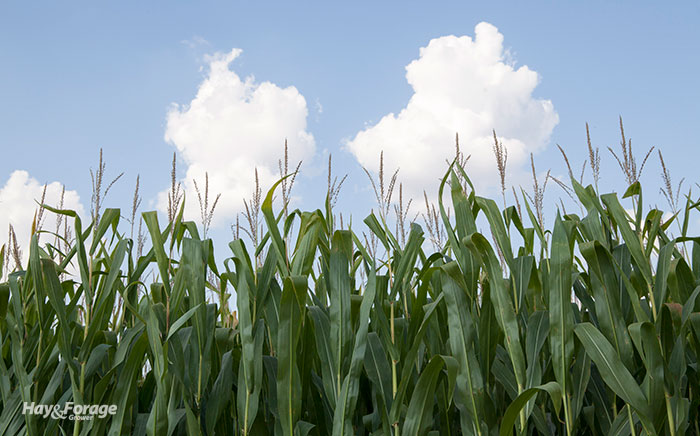
During the first session of the Silage for Beef Cattle Conference, which is sponsored by University of Nebraska-Lincoln (UNL) Extension, Lallemand Animal Nutrition, and Iowa State University (ISU) Extension, Texas A&M AgriLife Research and Extension Agronomist Jourdan Bell discussed the impacts of dry weather and limited water on silage production.
This year, the conference is being presented in four, one-hour webinar sessions in response to COVID-19 concerns.
“When we start talking about the field production phase of corn silage, we really do need to be proactive,” Bell shared. “Often times when I visit with producers, they aren’t necessarily as focused on the silage as they are on growing the forage. But, to make those quality feeds, we need to think about what we are doing in the field during those in-season conditions,” she added.
Growing the crop
Consider what your end user needs. Are you growing for a dairy, a cow-calf beef operation, or a feedlot? They all have different requirements.
Beef farmers are probably looking for a roughage component, whereas dairies are looking for a high-quality silage because it’s such a large portion of their ration. Thinking about your end user while making decisions in-season will help you establish and maintain long-term contracts.
Ask yourself these questions:
• Who is my end user?
• When is my planting window?
• When is my harvest window?
• How much water will I have during that time? (Consider access to irrigation and the climate of your area.)
• Which species and hybrids can I use to reach my quality goals in these conditions?
“Planning around these conditions will really make a difference in your product,” she added.
Harvesting silage
Harvest moisture is critical to ensure optimum silage packing. Typically, we see low moisture (around 65%) and high dry matter when it comes to silage, but moisture varies with storage methods.
Another concern is nitrate poisoning. Water stress, frost damage, and heavy rates of nitrogen fertilizer or manure can all cause nitrates to accumulate in the forage. “Some nitrates will dissipate through the fermentation process, but do not assume they will all be gone when it comes time to feed the forage,” Bell warned.
Water stress and soil compaction can lead to variability in a field. This can be easily observed in growth rates, and sometimes yields, but it can lead to differences in quality as well. “If sections of your field severely deviate, you may want to consider changing when and how you harvest the crop that year,” she said.
Bell reminded viewers that poor forage quality in the field often translates to poor silage quality.

C.J. Weddle is serving as the 2020 Hay & Forage Grower editorial intern. She currently attends Mississippi State University, majoring in agricultural education, leadership, and communications. She grew up on a farm in Vardaman, Miss., where her family raises sweet potatoes and soybeans.

